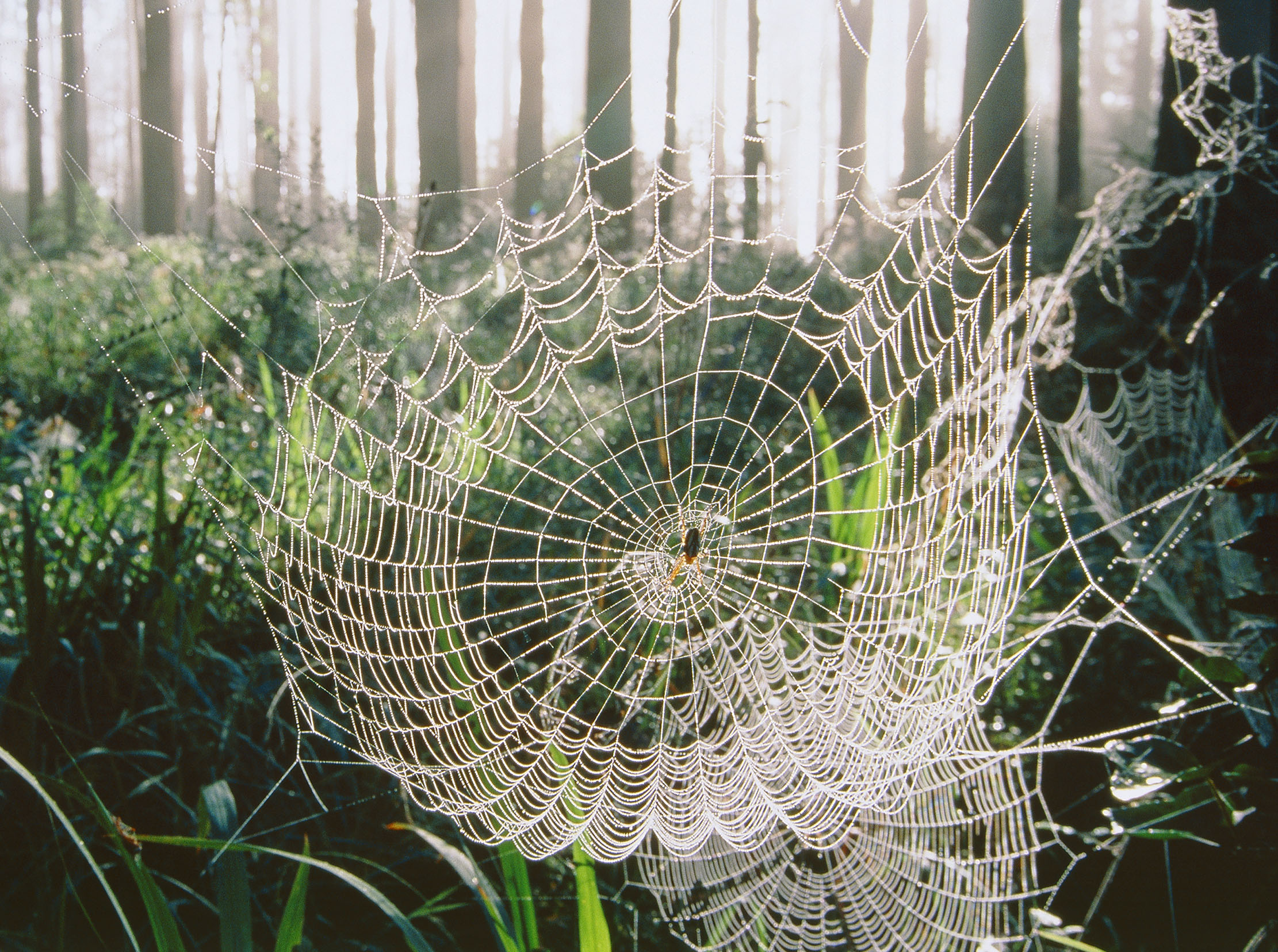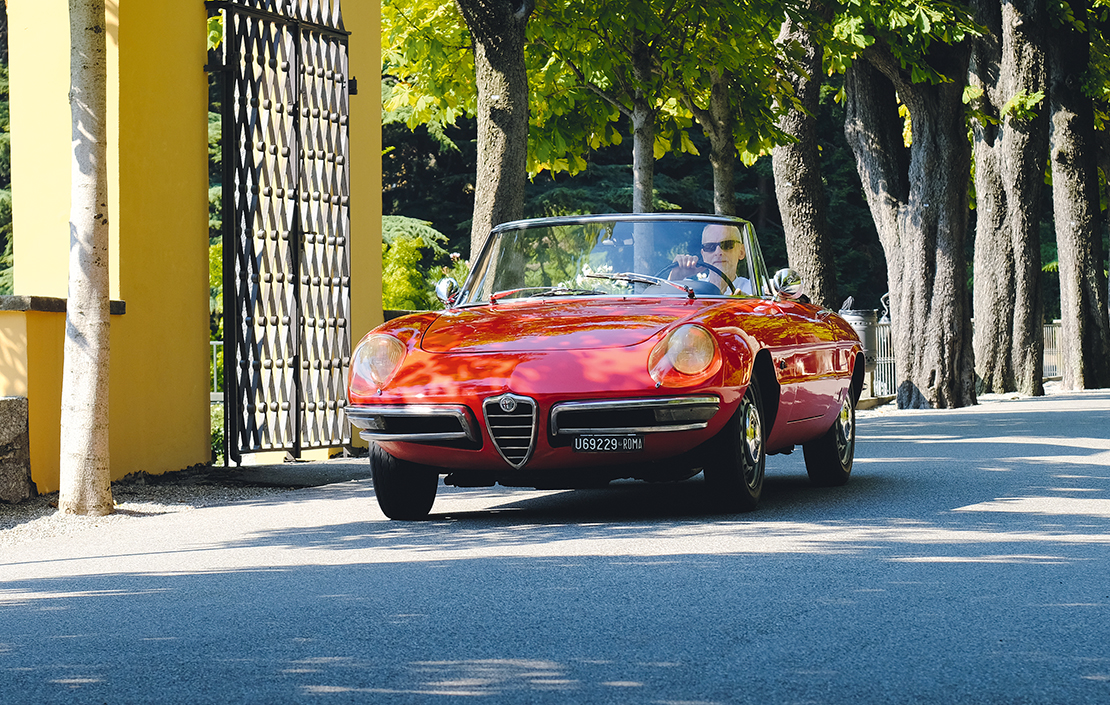Curious Questions: Why don't spiders get caught in their own webs?
Spiders webs are sticky — very sticky — and make short work of flies, wasps and other insects. So why don't the spiders get stuck? Martin Fone investigates.

Ever since the lockdown started, I have found solace in compiling a list of the upsides of the Covid-19 pandemic, my reasons to be cheerful. Foremost amongst this random list of joys is a rediscovery of nature.
Take birdsong. It is not that the birds have just started singing or that they have turned up the volume dial to eleven. Hitherto, rather like a rather feeble vocalist battling against the cacophonous karaoke backing track that human life has created, they have struggled to make an impression on the soundscape. Now they can be heard once more in all their glory.
I have even been able to dust off my knowledge of bird song, acquired as a child in rural Shropshire, to identify the avians I can hear. I glow with satisfaction when a bird comes into my line of sight to confirm my aural identification. Our collection of feeders and treats attracts a regular clientele of smaller birds and I am entranced by the gymnastics and perseverance they display in extracting their food.
Rich in time and a spendthrift with it, I can watch for hours industrious bees collecting pollen from plants and ants scuttling along our patio floor, carrying unfeasibly large objects back to their nest. As a confirmed arachnophile, though, my joy is unbounded when I spot one of nature’s most beautiful sights: a spider’s web glinting in the sunlight, or bejewelled with water droplets or hoar frost.
What a feat of engineering a web is, attached to an object by prodigiously long anchor threads which, when a spider starts out on its construction work, seem to be a statement of optimism over practicality. Slowly, using a silk thread — a protein fibre made from chains of amino acids — it takes shape, with spokes emanating from the centre and concentric lines linking the spokes.
The spokes are made from dragline silk, whose principal property is strength. They are five times stronger than steel of similar thickness would be, giving solidity and support to the structure. The rest of the web is made from flag silk which, although not as strong, is remarkably elastic with a tolerance of up to 30 degrees, providing the structure with enough give to absorb the impact of an insect flying into it without breaking. The beautiful and ingenious trap is now complete, ready to catch passing insects — but never to ensnare its own architect.
Unsurprisingly, the construct and patterns of the arachnid’s lair have fascinated the scientific community and prompted them to conduct what, to the uninitiated, may seem some bizarre experiments. In 1948, a Swiss pharmacologist, Peter N Witt discovered that the greater the dosage of psychoactive drugs — they tested LSD, mescaline, and caffeine — a spider ingested, the more irregular was the shape and size of the web they span.
Exquisite houses, the beauty of Nature, and how to get the most from your life, straight to your inbox.
The New Scientist reported on April 29, 1995 that a team from NASA’s Marshall Space Flight Centre in Alabama had repeated Witt’s experiments, using European garden spiders. They too discovered that the more toxic the chemical, the more deformed the web, prompting them to surmise that with the aid of a computer program they could quantify the effect to develop an accurate test for toxicity. I wonder what happened to that idea.
Witt’s discovery also prompted Hans Pieter Rieder from the Friedmatt Sanitorium to consider in the 1950s whether the erratic behaviour of spiders under the influence of chemicals could help in the diagnosis of schizophrenia. Rieder duly fed some unfortunate arachnids with urine from a sample group of schizophrenics and another batch with urine from his team of researchers, his implicit assumption being than none of them were schizoid. On comparing the resulting webs, he found that the patterns of those produced by urine-quaffing spiders were noticeably different from those made by the urine-free group. There was no discernible difference, however, between those spun by the two groups that had drunk urine. The only conclusion Rieder drew was that spiders hated the stuff, a useful fact to hide away in the dark recesses of your mind, I feel. Along with the advice never to drink and weave.
Once the web has been constructed, the spider will either sit in the centre of the web, waiting for the tell-tale vibration to alert it that it has a victim, or will hide elsewhere, relying upon a signal line to call it to its meal. The spiders in our garden must be well sated as they seem to be in no undue rush to see what the latest delivery from meals on wings has brought them. When they do investigate, they seem to move rather gingerly towards their prey which is, by now, well and truly enmeshed in the filaments of the web.
All of which brings us back to the main question: if the webs are so deadly to other insects, why don't spiders get caught up in them too?

The popular theory mooted several centuries ago was that the spider covered its body with a kind of oily coating. So convincing did the theory seem that, astonishingly, no one really bothered to find out if there was any substance to it. That is until Daniel Briceño and William Eberhard carried out a study of orb-weaving spiders in Costa Rica — nice work if you can get it — and published their findings in the German scientific journal, Naturwissenschaften, in April 2012.
They discovered that not all the threads in a web are sticky. Those areas made with dragline silk, principally the centre and the spokes, are dry, providing the spider with routes around the web that it can travel along without getting stuck.
That's not the whole story, of course, because their prey will have landed and enmeshed themselves in a sticky part of the web. So how do spiders negotiate that last little bit to collect their reward? Unlike their prey, which had rushed headlong to their doom, the spiders approached their victim very cautiously, ensuring that they held their bodies clear of the web and that only the tips of their legs touched the sticky filaments.
Now for the clever part. The setae — dense arrays of short bristly hairs on their legs — are arranged in irregular rows, allowing each bristle to break free from the adhesive droplets on the thread one at a time. So, whilst there is contact, not enough of their body touches the adhesive to impede its movement along the web.
Even that, though, didn't appear to tell the whole story. Attaching a spider’s leg to the sticky part of the web, the scientists found that it could not be easily removed. Perhaps, after all, the bristles did have some special coating, giving it extra protection against the adhesive substances.
Chemical analysis revealed that there were several oily substances present on the bristles that could act as a non-stick coating. As spiders are inveterate groomers, passing their legs through their mouths, the scientists surmised that they could be removing any vestiges of adhesive from their bristles and renewing the coating of anti-adhesive substances.
A web is clearly not just a thing of beauty. Their careful construction and the spider’s natural defences turn them into an efficient killing machine that, with caution, they can navigate without being hoist by their own petard. Otherwise, what a phenomenal own goal that would be.

Credit: Jeremy Taylor
A tour of Italy in a classic Alfa Romeo Spider, the classic 60s car promising romance and adventure
It's half a century since the Alfa Romeo Spider's cameo role in one of the defining films of the 1960s.

Credit: Northumberlandia
The rubbish dumps transformed from landfill to stunning natural beauty spots
Across Britain, landfill sites that were once heaving eyesores have been transformed in almost unimaginable ways – from nature reserves
Toby Keel is Country Life's Digital Director, and has been running the website and social media channels since 2016. A former sports journalist, he writes about property, cars, lifestyle, travel, nature.

